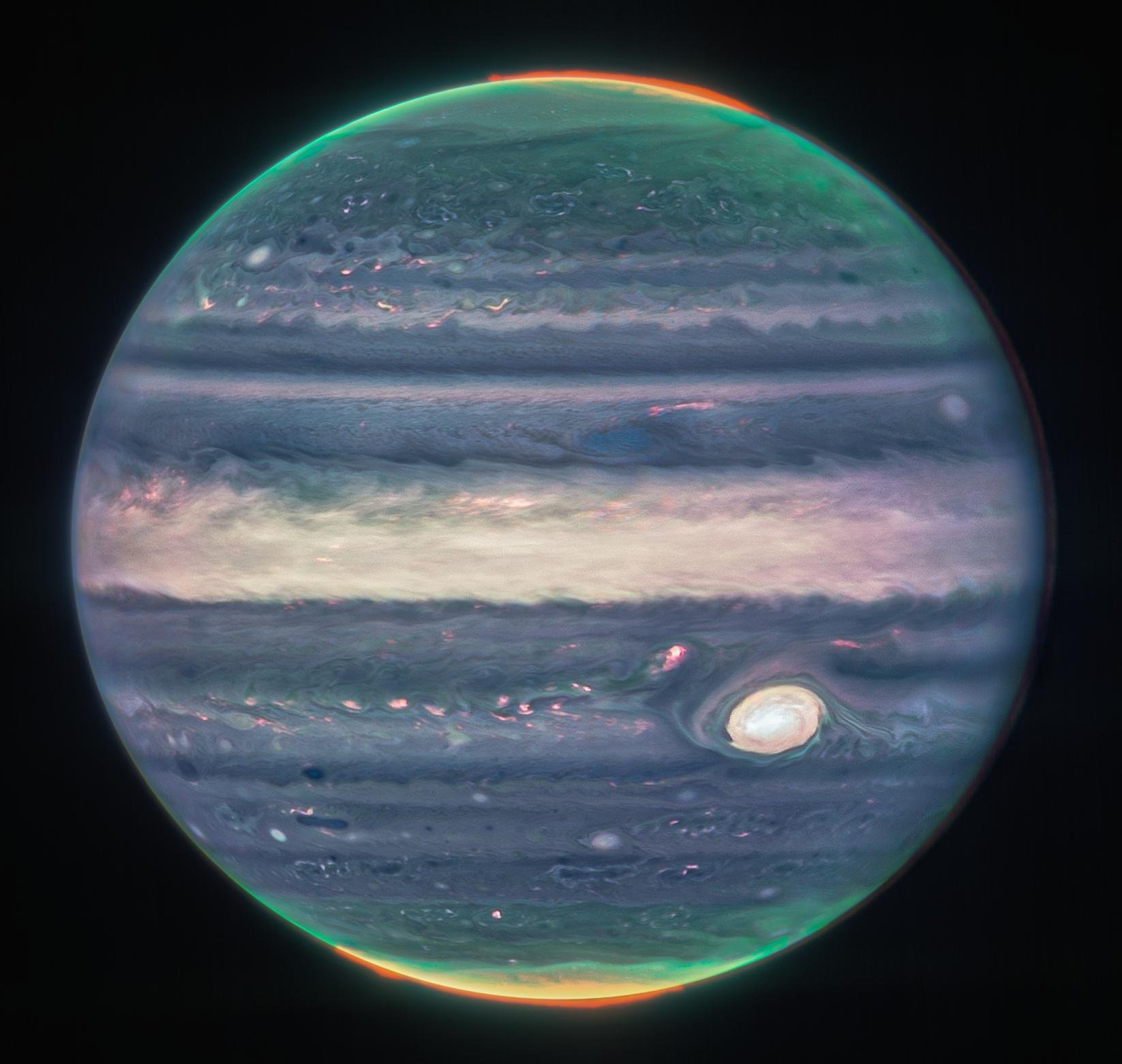See five relevant and entertaining astronomical curiosities of the week, selected by TecMundo and #AstroMiniBR. twitter profile to spread the knowledge of this science, which is the oldest!
#1: Infrared Solar System
Have you ever imagined what it’s like to watch? planets of the solar system in a completely new way? With the powerful James Webb Space Telescope, we can do just that. By observing planets in the infrared, a part of the light spectrum that our eyes cannot see, we reveal the fascinating features of these distant worlds.
For example, on Jupiter, James Webb is able to reveal incredible details of storms in the atmosphere of the giant planet. We will be able to observe the Great Red Spot with great clarity, revealing its internal structure and its changes over time.
On Saturn, the telescope has observed the rings with unprecedented precision, making it possible to study their composition and better understand their origin and evolution. In addition, James Webb was able to study Neptune’s atmosphere in detail.
With these images of gas giants, astronomers can study the presence of clouds, their chemical composition, and even the winds and atmospheric processes that occur on these planets.
#2: A galaxy with rings
You’ve definitely seen a planet with rings, but what about a galaxy with rings? The image above provides a good example: The M94 galaxy, also known as the Cat’s Eye Galaxy, is one of the most fascinating celestial objects in the universe. Located about 16 million light-years from Earth in the constellation of the Hounds, M94 has a unique structure of dust and star rings..
These rings around the galaxy’s core are formed by dense clouds of interstellar dust illuminated by hot young stars. This combination of dust and stars creates a spectacular sight when viewed through telescopes.
Dust rings along with S-shaped spiral arms give M94 the intriguing appearance of a cosmic eye. Studying these structures helps us better understand the formation and evolution of galaxies.as well as the dynamics of gas and stars within them.
Galaxy M94 is one of those cosmic treasures that continues to amaze our understanding of the cosmos.
#3: How many places of the Pi will be used?
The number Pi, represented by the Greek letter p, is a mathematical constant widely used in technical-scientific calculations, as well as being a value well known to students in schools and universities around the world. It represents the relationship between the circumference and diameter of a circle, a fact we learned in elementary school.
Since it is an irrational number, i.e. a number with infinite decimal places and not repeating in a known pattern, it is up to the customer to get it more or less close to the decimal point.
The importance of using more decimal places of Pi in calculations lies in the accuracy of the results: the more decimal places we use, the more accurate the estimates and measurements become. NASA, for example, provides extremely high accuracy by using about 15 decimal places of Pi in space travel calculations.. However, when it comes to estimating the diameter of the universe, accounting for astronomical scales requires a larger number of around 40 decimal places to get more accurate results.
#4: Natural satellites of the Milky Way!
in the universe, Satellite dwarf galaxies are small galaxies orbiting larger galaxies like the Milky Way.. This class of galaxies is extremely interesting because they hold a wealth of information about the dynamics of galaxy groups and clusters, one of the largest structures in the Cosmos.
As the universe evolves, these dwarf galaxies may face different fates: Some studies suggest that some may be diluted by the Milky Way or become cannibals due to the gravity exerted by our galaxy.
These events could cause these smaller galaxies to merge with the Milky Way and contribute to the growth and evolution of our host galaxy. On the other hand, some dwarf galaxies may retain their integrity and continue orbiting around the Milky Way for billions of years, preserving their shape and structure.
Studying satellite dwarf galaxies helps us better understand the formation and evolution of galaxies and how the universe evolved over time.
#5: How colorful are James Webb’s photos?
The James Webb Space Telescope has the ability to capture incredible images of the distant universe. However, these images are usually shot in black and white., because James Webb primarily works with instruments that detect different wavelengths of light. So how do we get these beautiful color images that we see then?
Scientists use a technique called “computational coloring” to add color to pictures. Them Do this by combining images captured at different wavelengths and assigning specific colors to each of those wavelengths.. This technique allows us to visualize important information about the chemical composition and physical properties of celestial bodies such as stars, galaxies and nebulae.
Source: Tec Mundo
I’m Blaine Morgan, an experienced journalist and writer with over 8 years of experience in the tech industry. My expertise lies in writing about technology news and trends, covering everything from cutting-edge gadgets to emerging software developments. I’ve written for several leading publications including Gadget Onus where I am an author.












